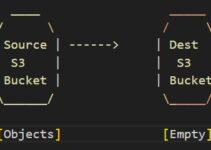In this AWS Tutorial, we’ll explain the differences between AWS NAT Instances vs NAT Gateways.
AWS NAT Instances vs NAT Gateways
What is NAT: [Network Access Translation]
- NAT device allows instances in private subnets to connect to the internet
- NAT device forwards traffic from private instances to other AWS services
- NAT device is not supported for IPv6 traffic, NAT uses an egress-only internet gateway
- Instance’s address is replaced with the NAT’s address and will translate the address back to the source private IP address (IPv4)
- Two types of NAT devices supported
- NAT Gateways
- NAT Instances
NAT Gateway: (Managed NAT Service)
- It provides better availability, higher bandwidth (up to 10 Gbps)
- As it is managed service, charges apply for creating and using. (Hourly charge for the traffic of data transfer
- Each NAT Gateway is created in a specific availability zone.
- NAT Gateway has to reside in a public subnet
- NAT Gateway needs an Elastic Ip address – Static, Public IPv4 address
NAT Instances
- NAT Instance runs on EC2 and is launched from a NAT AMI
- Resides in Public subnet
- The supported traffic load depends on the instance size
- NAT instance Bottleneck will increase the instance size
- NAT instance runs behind a security group
- Needs to attach a Public IP or Elastic IP to a NAT Instances
- High availability can be achieved by – Auto scaling groups, failover automation
End of Topic – AWS NAT Instances vs NAT Gateways.
thanks for reading these articles, you’ll like the below articles.
How to Update Hostkey Automatically in Known Hosts










